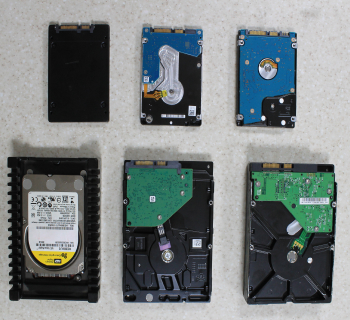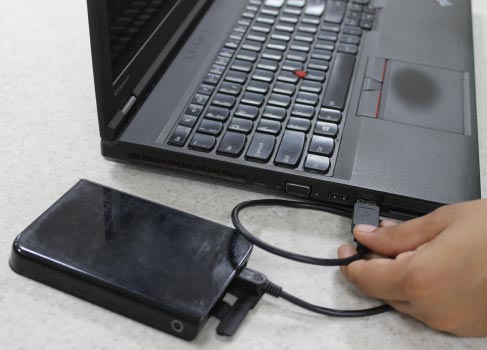Table of Contents
Features of Windows Data Recovery
Windows Data Recovery software is used to retrieve data from various types of storage media, including hard drives, USB drives, memory cards, and other external storage devices. The features of Windows Data Recovery software can vary depending on the specific software program and the needs of the user. However, some common features of Windows Data Recovery software include:

- 💾 Recovery from various types of storage media: Windows Data Recovery software can be used to retrieve data from various types of storage media, including hard drives, USB drives, memory cards, and other external storage devices.
- 🔍 Quick and deep scanning: Windows Data Recovery software offers both quick and deep scanning options to retrieve lost or corrupted data. Quick scanning is a faster option that scans the file system and locates deleted files, while deep scanning is a more thorough option that scans the entire storage media for lost or corrupted data.
- 👀 Preview of recoverable files: Windows Data Recovery software offers a preview feature that allows the user to preview the recoverable files before recovering them. This helps the user to identify the files they want to recover and avoid recovering unnecessary files.
- 🖴 Partition recovery: Windows Data Recovery software can recover lost or corrupted partitions and restore data from them.
- 💿 Disk imaging: Windows Data Recovery software can create an image of a hard drive or other storage media, which can be used to recover data from a damaged or corrupted drive.
- 🖺 Support for various file formats: Windows Data Recovery software can recover data in various file formats, including documents, images, videos, audio files, and other types of data.
-

- Advance data recovery Windows data restoration software is advance data recovery utility that recovers lost data, pictures and songs from corrupted, formatted or virus infected FAT/NTFS partitions hard disk drive.
- Easy Vista file recovery Easy to use windows FAT/NTFS partition hard drive data rescue utility recover and restore lost formatted information deleted using shift + Del keys. Utility repair corrupted or inaccessible files folders in simple and easy way.
- External hard disk partition recovery Windows file recovery software is easy to use and user friendly partition data recovery utility that restore data, pictures, images and other files, documents from different types of hard disk drive including SATA, ATA, SCSI etc.
- Hard disk data recovery Formatted hard disk data recovery application retrieve lost or missing digital files that includes *.jpg, *.bmp, *.jpeg, *.txt, *.doc, *.xls, *.mdb, *.gif, *.mp3, *.mid, *.html and other related supported files with all different windows based operating system.
- How to recover partition If you have lost your hard disk partition data, then don’t be worries, we provide data recovery software for windows that helps you to restore your favorite music songs (both audio and video), office files, pictures etc.
- Laptop disk data recovery Data recovery software and service to salvage accidentally erased windows partition data from FAT/NTFS partition hard disk drive. Tool is computable with all windows OS including 98, 2000, NT, ME, XP and Vista with laptop or desktop computer.
- Notebook windows recovery Windows partition files recovery utility restore accidentally deleted data restore corrupted NTFS/NTFS5/FAT32/FAT16/VFAT partition folder erased MS-word, excel, access file collection different pictures etc.
- Powerful Vista data recovery tool Hard disk file recovery software is powerful and advance windows data recovery software that recovers and restores all lost formatted partition data that includes digital pictures, images, office documents, mp3 audio songs etc.
- Quick windows data recovery Quick and effective windows data salvage software recover formatted windows partition data that includes different digital files such as pictures files (jpeg, jpg, bmp etc), web pages (html, html, php etc) and office documents.
Things you should (and should not) do in case of Windows Crash
A Windows crash can be a frustrating experience, especially if you have important data and files on your computer. Here are the steps you should take in case of a Windows crash:
-
Try to Restart the Computer:
The first step you should take in case of a Windows crash is to try to restart the computer. Sometimes a simple restart can resolve the issue and get your computer up and running again.
-
Check for Hardware Issues:
If your computer will not restart, you should check for hardware issues, such as a failing hard drive or a damaged RAM. You can use tools such as the Windows Event Viewer or System File Checker to diagnose hardware issues.
-
Use System Restore:
If your computer is able to start in Safe Mode, you can use the System Restore tool to restore your computer to a previous state. System Restore will undo recent changes to your computer, including software installations and system updates, which may be the cause of the crash.
-
Run a Virus Scan:
If your computer is infected with malware or a virus, it can cause a crash. You should run a virus scan to ensure that your computer is not infected with any malicious software.
-
Check for Software Compatibility Issues:
Sometimes a Windows crash can be caused by compatibility issues between software programs. You can check for compatibility issues by running the Program Compatibility Troubleshooter or by uninstalling and reinstalling the problematic software.
-
Update your Drivers:
Outdated or incorrect drivers can also cause Windows crashes. You should check for driver updates and install any available updates to ensure that your computer's hardware is working properly.
-
Perform a Clean Boot:
If you are still having issues after trying the above steps, you can perform a clean boot to disable all non-essential services and startup items. This can help you identify the cause of the crash and resolve the issue.
-
Reinstall Windows:
If none of the above steps resolve the issue, you may need to reinstall Windows. This is a more drastic step, but it can resolve serious crashes and issues with your computer. Be sure to backup your data and files before reinstalling Windows, as the process will erase all data on your hard drive.
In conclusion, a Windows crash can be a frustrating experience, but with the right steps, you can resolve the issue and get your computer up and running again. You should try to restart the computer, check for hardware issues, use System Restore, run a virus scan, check for software compatibility issues, update your drivers, perform a clean boot, and if necessary, reinstall Windows. By taking these steps, you can help ensure that your computer is functioning properly and that your data and files are safe.